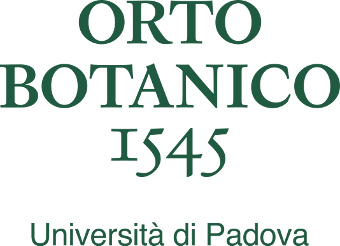Herbaria gallery
There are 136 herbaria on show, along with the books that have made the history of botany and medicine

There are 136 herbaria on show in the Gallery: a selection from the 800,000 preserved on the top floor in the historical herbarium, which can be perused on request by scholars and enthusiasts. The Padua Herbarium was established in 1835, three centuries after the foundation of the Botanical Garden, when Giuseppe Antonio Bonato — Prefect at the time — donated his herbarium and library to the University along with materials left by Giovanni Marsili, his predecessor.
In addition to items from the collections of Prefects Bonato and Marsili, visitors to the Gallery can see others collected by Roberto De Visiani during numerous trips to Dalmatian and Balkan lands, also the collections of Silvia Zenari and various features discussing the links between plants and the world of culture, medicine and art. There is also a herbarium of the young Filippo de Pisis, donated to the University of Padua in 1917, with his annotated drawings and thoughts.
Exhibits in the museum include fungi collected by Pier Andrea Saccardo, author of Sylloge fungorum omnium, initiated in 1882 with the classification of all fungal species known at the time, assembled in a herbarium containing some 70,000 samples of fungi from the Veneto region and other parts of the world.
Also on display are the algae of Achille Forti, who collected a thousand genera sourced from fresh water and salt water locations around the world. Forti undertook several journeys, from the Balkans to Norway, but his collection also takes in numerous samples of other scientists.
At the end of the Gallery, visitors can engage with the interactive exhibit An illustrated history of botany and medicine created by Todo, and see some of the books from the Vincenzo Pinali and Giovanni Marsili historic library of medicine and botany. The scope widens to take in the scientific world of the Renaissance, when many physicians and naturalists began working with artists to make known their discoveries — the fruits of revisiting the classics, and direct observation of nature and the human body. Illustrations in scientific books become less and less schematic and more vivid, like those of the Flemish anatomist Andreas Vesalius, whose celebrated De humani corporis fabrica is exhibited here in its first edition of 1543. The representation of plants evolved from the imaginary illustrations of Pseudo Apuleius (late 15th century AD) to the product of direct observation, pioneered notably by Leonhart Fuchs (1549), and ultimately to the collection and preservation of actual specimens in a herbarium, as in the case of Giovanni Macchion (1655). In just a few metres of museum space, visitors are made familiar with the symbolic stages in the history of botany and medicine.






